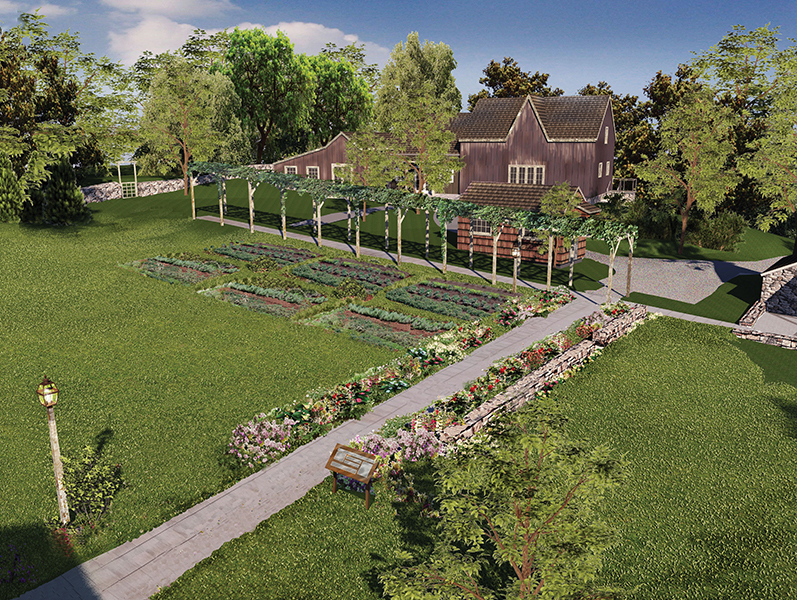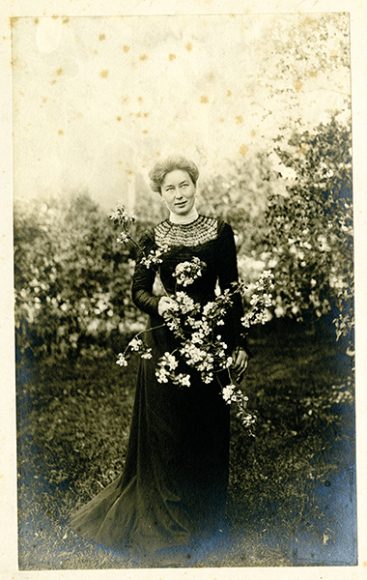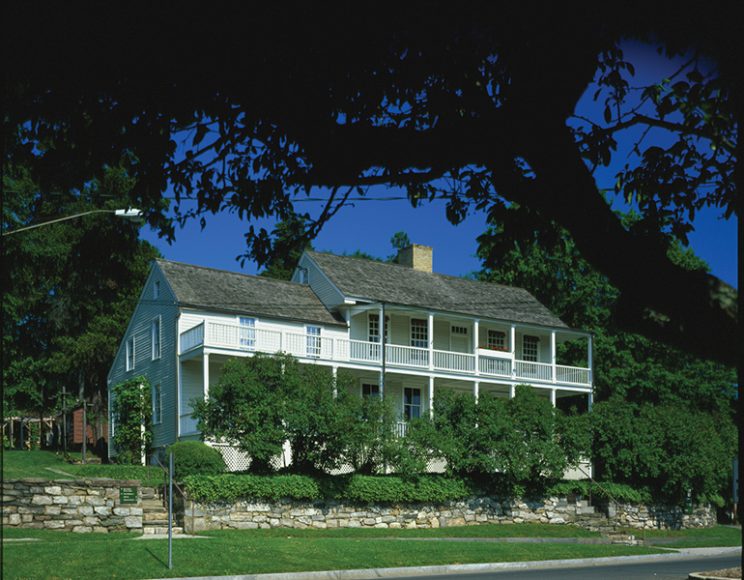Anyone who’s been by the Bush-Holley Historic Site in Cos Cob of late can see there’s a lot going on.
The intense construction at the headquarters of the Greenwich Historical Society, founded in 1931, is an outward sign of the society’s ambitious campaign to reinvent its campus.
The complex, a step back in time in the shadow of an I-95 overpass, is in the midst of a project that will do everything from double its visitor parking and offer direct access and an elevator for senior citizens and the disabled to expand its exhibition and gallery spaces, archives and program capabilities.
“It’s just going to change our game,” says Debra Mecky, the society’s executive director, on a recent afternoon.

But what’s not so easy to see is a project within the project — the restoration and expansion of its Impressionist Era Gardens.
The site, with roots dating from the 18th century, is perhaps best-known for the time when it served as a boarding house for artists and writers. It was run by artist Elmer Livingston MacRae who came first as a student and met and fell in love with Constant Holley, who became his wife.
The Cos Cob Art Colony that flourished from 1890 to 1920 is considered of prime influence on the birth of American Impressionism — a later, bolder form of Impressionism than its French counterpart — led by such notable artists as Childe Hassam, John Henry Twachtman, Ernest Lawson, Theodore Robinson and J. Alden Weir. The site itself even inspired many of their paintings.
Now, the society has received a grant from Hortulus, a Greenwich garden club, to restore its ornamental flower gardens, kitchen gardens and grape arbor as part of the master plan to be unveiled this fall.
“We received a very generous gift from Hortulus,” says Mecky, calling the grant “pretty significant… We were very pleased to be thought of in this way.”
The period gardens will add another layer to the site’s interpretation, showing visitors how they were both part of the daily routine — growing food for the residents — and as inspiration for the artists creating their plein air paintings.
Signs will offer visitors history and background.
“There’s always this layer of interpretation,” Mecky says.
The garden project will include the relocation and expansion of the historic fruit and vegetable garden that supported the boarding house.
“These are historically recreated gardens of what people grew,” Mecky says.
A new Impressionist-era perennial flower garden will be created along the walkway that will link the new building to Bush-Holley House and the Vanderbilt Education Center.
Unlike formal English gardens, the Impressionist gardens were less structured, Mecky shares.
“They were sort of these free and opened gardens, ‘old-fashioned’ people even called them that then.”
In addition, the grape arbor will be replaced with a more durable structure that will better support the existing grape vines of which some are 120 years old. (That particular project will be unveiled in 2019, according to Mecky.)
To produce the plans, the society has collaborated with design consultants — the Greenwich-based landscape architecture firm of Conte & Conte LLC and the award-winning historic preservation architectural firm David Scott Parker Architects of Southport and Manhattan.
Historic references employed by Conte & Conte, according to the society, included the society research as well as a “Garden Calendar of Holley House” proprietors Elmer and Constant MacRae from 1918-1919. It’s a charming list that touches on everything from peaches and Northern spy apples to corn and sprouts to hollyhocks, calendula and jonquils.
For the grape arbor reconstruction drawings, David Scott Parker Architects carefully examined all physical and documentary evidence.
The work will be carried out by Fairfield House & Garden Co., which is the sister construction company of Conte & Conte.
Founded in 1930 and a member of The Garden Club of America, Hortulus’ mission is “to stimulate the knowledge and love of gardening and creative design; to protect, restore and improve the quality of the environment through education, programs and action in the fields of conservation and civic improvement.”
Hortulus and the Greenwich Historical Society have a longstanding relationship dating from the Hortulus Conservation Award designed by Elmer MacRae in 1945.
It’s all coming full circle, Mecky says.
“You can imagine coming here with all these fruit trees,” she adds of the grounds often depicted in the artists’ work as they tried “to capture the landscape and gardens as they changed through the seasons.”
The historic site, part of the Connecticut Art Trail and of the Historic Artists Homes & Studios program, is ready for its profile to be raised, its audiences expanded.
As Mecky shows a selection of project renderings, she pauses on one of contemporary art students painting on site, one that particularly ties its history to its future.
As she says, “This just speaks to the broader use of the site.”
A Sept. 29 unveiling of the project is planned at the Cos Cob campus on Strickland Road.
For more, visit greenwichhistory.org.







